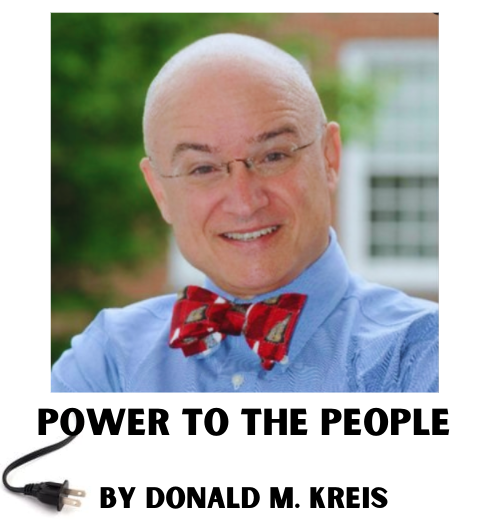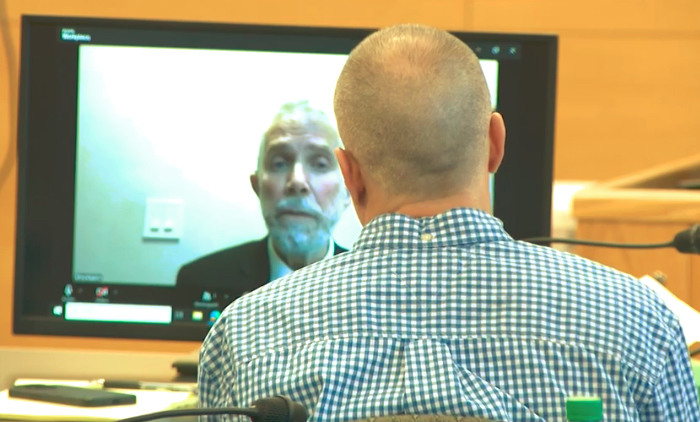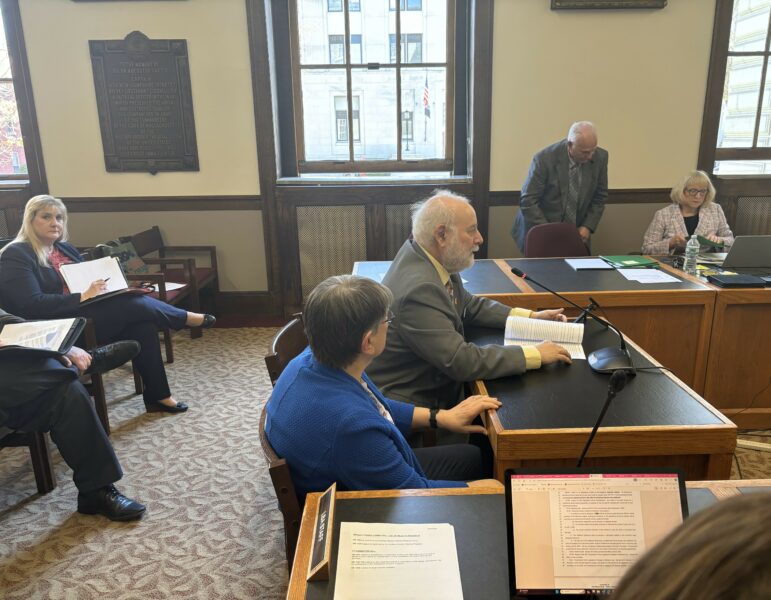Power to the People is a column by Donald M. Kreis, New Hampshire’s Consumer Advocate. Kreis and his staff of four represent the interests of residential utility customers before the NH Public Utilities Commission and elsewhere.
By DONALD M. KREIS, Power to the People
Captain Ahab here, with some information about what I am hoping to harpoon as I sail around.
I’m not the fictional Captain Ahab, the monomaniacal sea captain invented by author Herman Melville in the great American novel from the Nineteenth Century, Moby-Dick. Rather than hunt whales, I am firmly planted here on land and the target of my harpoon is bloated utility ROE.
By “utility” I mean, principally, the big three in New Hampshire – Eversource, Liberty and Unitil. And by ROE I mean “return on equity,” which is a fancy way of saying profit. As the state’s Consumer Advocate, my job is to make sure that utility shareholders do not reap unreasonably high profits at the expense of residential utility customers.
As natural gas and, especially, electric rates have soared in recent months there is widespread concern that utilities, their shareholders, and their executives are profiting handsomely at the expense of struggling ratepayers. So I thought I should try to explain precisely how it is that these companies make money.
Here is how they do it: They buy toys.
By “toys” I mean capital assets – substations, poles, wires, pipelines, even gigantic liquified natural gas storage tanks of the sort Liberty was hoping to build a few years ago in Epping. The Public Utilities Commission (PUC) sets rates for utilities that are designed to allow them to earn a return on these investments for their shareholders. That’s where the profit comes from.
Money – the stuff used to finance these capital assets – comes in two flavors: Yours and other people’s. For utilities, other people’s money means funds borrowed from banks. Your money, if you are a utility, is the shareholders’ investment.
Thus, when the PUC sets rates, it relies on a weighted average cost of capital for each company. How much of the company’s assets are financed by borrowed money, and at what interest rate? What’s a reasonable return on everything else — the percentage of the company’s assets that is financed by the shareholders themselves? In other words, what should the allowed ROE be?
These determinations get made via rate cases – huge PUC proceedings that only happen every few years because they’re expensive and complicated. This leads to the dreaded regulatory ”lag” – the fact that, as the years go by and the utility buys new toys, those toys are not reflected in the rates.
Fortunately for utility shareholders – less fortunately for ratepayers – the utilities have found a way to jigger around this problem. They persuade the PUC to authorize “step adjustments” to rates – basically, increases that take account of those new toys automatically, without having to do a full-blown rate case in which everything the utility is doing, right or wrong, is under examination.
Of course the other way a utility can combat regulatory lag is by operating itself more efficiently. If operating costs are less than what are included in rates, any savings goes straight to the bottom line as profit.
What makes me feel like Captain Ahab is one of the fundamentals of corporate finance: ROE and shareholder risk are supposed to go hand in hand. If you’re 4D Molecular Therapeutics, developing experimental gene therapies that usually don’t pan out, your shareholders will demand a high ROE or they will invest their money elsewhere.
Conversely, If you’re Eversource, Liberty, or Unitil – relying on tried and true technology to provide an essential public service to captive customers – then your ROE ought to be modest indeed. But you should hear how utilities whine to regulators about how risky their businesses are!
Now that I have offended the utilities, I would like to stick up for them a bit.
Recently I attended a public forum at which some youth activists distributed questions for state legislators and legislative candidates. Here are two of the questions:
“Will you go on record to ask the NH Public Utilities Commission to reverse its decision to allow electric companies to increase rates by 100% or more? Will you vote for rate caps that would prohibit utility companies from increase[ing] rates by 100% while enjoying record profits?”
These folks have aimed their harpoons at the wrong target. I say that reluctantly, because righteous indignation among New Hampshire’s young people is both welcome and justified, especially when the topic is energy.
Rate caps would be a great idea if they weren’t unconstitutional. The U.S. Constitution prohibits the government from, among other things, taking private property for public use without “just compensation.”
Thus, the U.S. Supreme Court ruled almost a century ago that if a regulator denies a utility the opportunity to earn a reasonable return on shareholder investment, the rates approved by the regulator are “confiscatory.” In other words, it is as if the government has confiscated the utility’s property – all those toys – without just compensation.
So, yeah, the PUC could reverse its recent series of decisions that roughly doubled the default energy service rates charged by electric utilities. But the utilities would turn around and sue the PUC in federal court. And the utilities would win.
In a way, the whopping big increases to default energy service rates are a feature, rather than a bug, of the state’s 1996 electric industry restructuring act. Thanks to that statute, you aren’t obliged to buy default energy service when the price becomes outrageous – you can migrate into the world of competitive energy suppliers.
Another feature is that Eversource, Liberty, and Unitil earn no profits on default energy service. They just buy it off the wholesale market and pass their costs on to their default energy service customers. There are no toys involved – so, no return on equity and no profit to utility shareholders.
In Melville’s story, Ahab’s quest to slay the great white whale Moby-Dick did not turn out well for the demented captain or his crew. The moral of the story, in the present context, is to choose one’s targets wisely.
And lest you find the analogy to Moby-Dick unhelpful, remember that Melville’s novel is all about an essential energy technology of its day – whale oil.





